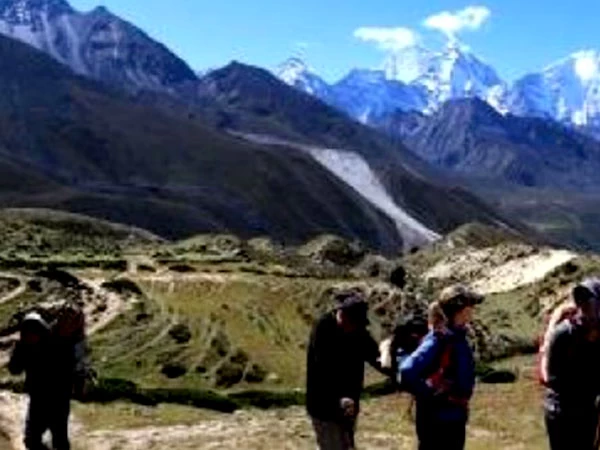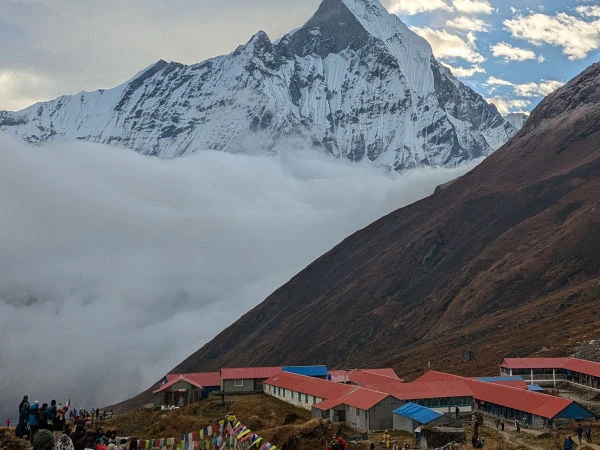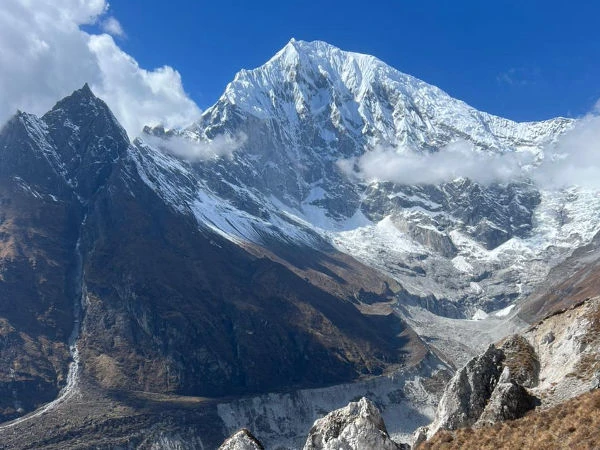Annapurna Base Camp Trek is the second most popular trekking destination in Nepal after the Everest Base Camp Trek. The trek presents you with the panoramic views of the mountains, Sherpa Community, biodiversity and the overall scenic beauty of the Annapurna region.
The Annapurna Base Camp trek will give you the opportunity to view the mountains such as Mount Annapurna, Mount Himchuli, Mount Macchhapuchhre, Annapurna South, Ganga Purna and many more. You will feel amazing as these mountains will surround you while you trek to the Annapurna Base Camp.
Annapurna Base Camp sits at an altitude of 4130 meters and is popular among most of the tourists around the world. If you are one of those who loves adventures and like experiencing trekking, you should not worry about the Annapurna Base Camp Trek difficulty.
How Difficult Is It to Trek the Annapurna Base Camp?
Annapurna Base Camp Trek is one of those treks that is not considered difficult. It is comparatively an easy trek. There are many challenging and physically demanding treks in Nepal than the Annapurna Base Camp Trek. Therefore, Annapurna Base Camp trek is a moderate Trek.
Unlike other treks, you do not need any special pieces of training for Annapurna Base Camp Trek. If you have a stable health condition, you can enjoy this trek. As you are trekking to a mountains region, you can expect some slight difficulty as you move to a higher altitude. But, do not worry, with a bit of patience, the trek is achievable.
There are a lot of adventure waiting for you if you plan on trekking to the Annapurna Base Camp. Experienced, as well as non-experienced trekkers from all around the world, can join Annapurna Base Camp Trek.
Some of the determining factors for Annapurna Base Camp Trek Difficulty are as follows:
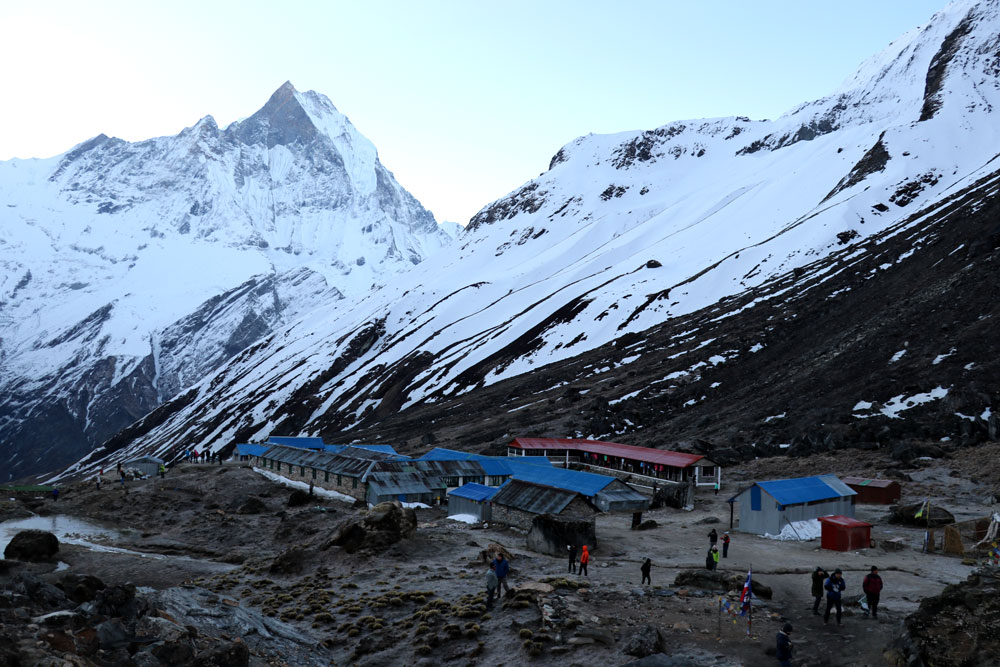
Difficulty Due to Weather and Temperature
Weather and temperature play a vital role in determining the difficulty level for Annapurna Base Camp Trekking. It is comparatively easy to trek in spring and autumn seasons than in the winter and monsoon seasons.
During the time of winter, the trails are fully covered with snow making you difficult to walk and reaching to your destination. Similarly, in the monsoon season, heavy rain falls which may obstruct your trekking. The paths get muddy and slippery making you difficulty in walking. There is also a chance for you to slip.
Some of the seasons that would increase the difficulty level for trekking the Annapurna Base Camp are as follows:
June- September
These months define the monsoon season in Nepal. During these months heavy rainfalls in the Annapurna region. The weather becomes hotter and more humid. This creates difficulty while you walk to a lower altitude.
During these months, the number of leeches also increase. You might also expect some mudslides and downpours. Because of the rain, the path also gets muddy and slippery which results in uncomfortable while trekking.
Apart from the difficulty, the greenery you get to see during the monsoon season is admirable. The scenic beauty becomes more beautiful after the monsoon rain.
December- March
December to March are one of the coldest months in the Himalayan region of Nepal. The temperature of the Annapurna region decreases. You can see some of your trail covered with snow.
The daytime temperature is low and it falls below the freezing point during the night time. The Thorang La Pass which is at the altitude of above 5000 meters is often covered with snow. You can find snow in some of the places which result in difficulty while walking. If the trails are blocked with snow, you may also have some difficulty in finding teahouses and lodges.
But, do not worry. This case is only seen in the winter season. During spring and autumn, most of the trails will not have snow and you may not have to face this difficulty.
Annapurna Base Camp Trek Total Distance
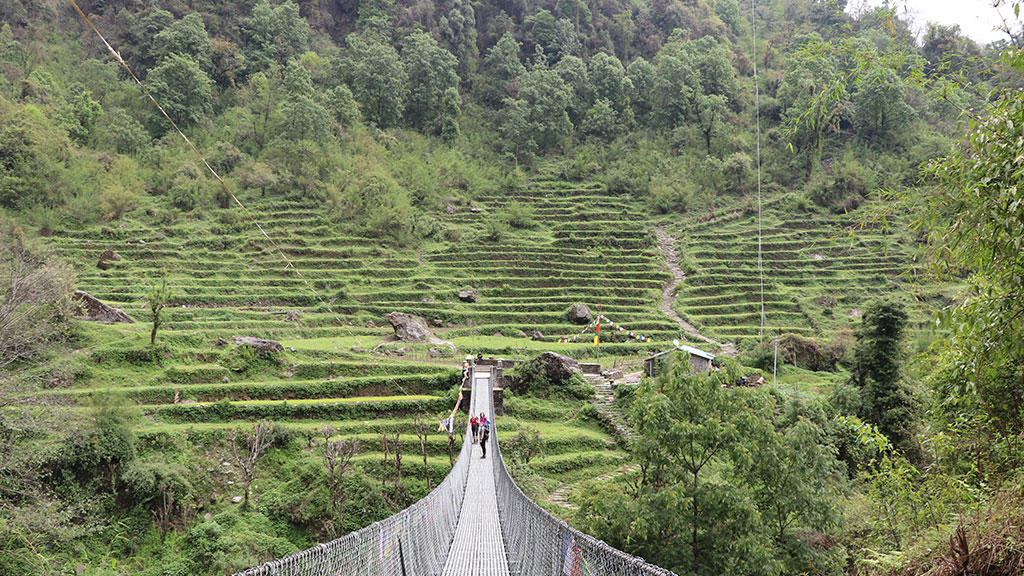
The Annapurna Base Camp Trek covers around 115 kilometers in which you have to walk for about 15-20 kilometers per day. This trail is popular among most of the trekkers around the world.
The trekking trails of the Annapurna Base Camp is easy but the rocky terrains in the mountains are quite challenging than the normal hill trails. There are some ups and downs along the trail where you need to focus.
This trekking trail will not be too challenging for the ones who have been walking to higher altitudes for 5-6 hours. But for the ones who are new to adventure, this trekking trail may provide some difficulties.
Annapurna Base Camp Trek Altitude
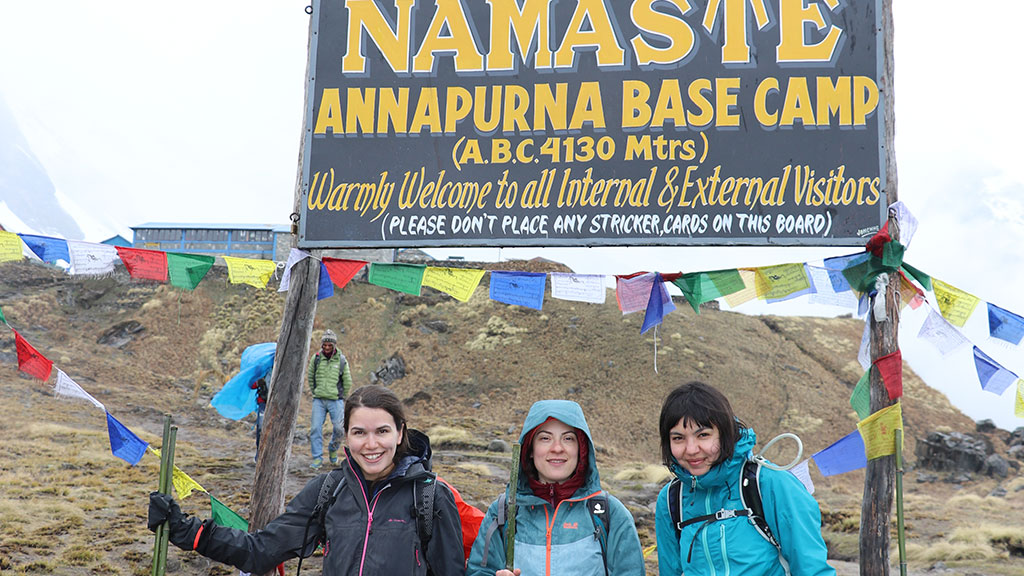
Annapurna Base Camp Trek follows the route of the 10th highest peak in the world, Mount Annapurna. This sits at an altitude of 8091 meters. Annapurna Base Camp lies at the altitude of 4130 meters in the Annapurna region of Nepal.
Since the base camp lies at an altitude above 4000 meters, you may face some minor difficulty in breathing. But, remember, it is not one of the highest altitude treks of Nepal. There are even more life-threatening treks in Nepal which are at a higher altitude than Annapurna Base Camp.
Therefore, Annapurna Base Camp Trek is doable by everyone. You do not have to worry about the height of the Annapurna Base Camp. It is reachable if you have patience and determination to achieve your destination.
Altitude Sickness
Altitude sickness is also one of the major problems trekkers face while trekking to the Himalayas. As you trek to a higher altitude, the amount of oxygen in the air gets thinner. This makes your difficulty in breathing which ultimately results in Altitude Sickness.
Altitude sickness is a common and normal problem among trekkers traveling to a higher altitude. The symptoms of altitude sickness are nausea, headache, difficulty in breathing, vomiting, and dizziness. If you face any of these symptoms, descend to a lower altitude to save yourself from the altitude sickness.
Annapurna Base Camp is at an average altitude of more than 4000 meters. There is slightly a chance of getting altitude sickness as you ascend towards a higher altitude.
Therefore, it is better to know about the symptoms and precautions of the altitude sickness before you leave for Annapurna Base Camp Trek.
Preparation/Training is Most
The route to Annapurna Base Camp is reliable and not too difficult and steep. However, if you are a beginner, it is best to take proper pieces of training before you leave for Annapurna Base Camp Trek.
Proper preparations are necessary if you are trekking in the mountains for the first time. The trek can be challenging if you are an inexperienced trekker. You should be able to walk for about 6-7 hours daily on average. Annapurna Base Camp Trek difficulty increases if you have zero experience in trekking.
Therefore, to reduce the difficulty level of the trek, it is best to come prepared for Annapurna Base Camp Trek. You can also hire a guide and a porter for an easy and comfortable trekking experience.
Annapurna Base Camp Trek Without A Guide
Trekking to Annapurna Base Camp without a guide can be a bit difficult especially if you are a beginner. There are several difficult paths along the route which involves climbing and jumping. Therefore, it is best to trek to Annapurna Base Camp with a guide.
The Annapurna Base Camp Trek is also possible without a guide but the difficulty level increases. You have to do everything by yourself from trekking permits to lodging, food, and accommodation. So, if you want less challenging and comfortable trekking, hiring a guide will be best. You can also hire a porter who will carry your bags for you. Because of this, you will feel less tired and can focus on the scenic beauty of the Annapurna region too.
What To Pack For Annapurna Base Camp Trek?
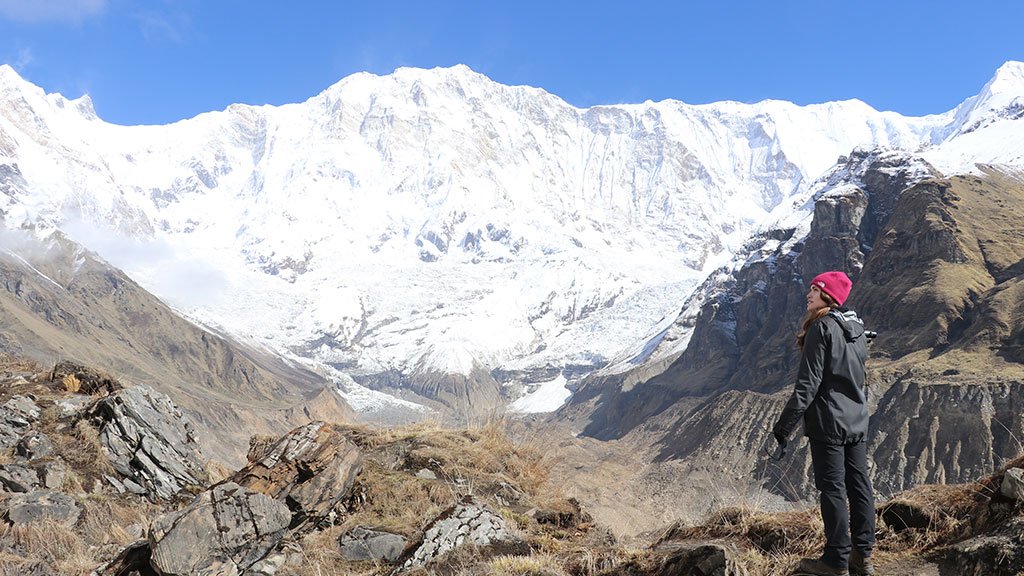
Packing is one of the important aspects before trekking. As Annapurna Base Camp Trek, you do not have to pack many things. You can pack items that are only necessary for you. The packing list also depends upon the time of the year you are traveling. During winter and monsoon season, you may have to carry many items. But, during spring and autumn, light packing is enough.
A pair of Hiking Boots
Hiking boots are one of the most important items you shouldn't miss while packing. Do not forget to pack a pair of hiking boots when packing for the Annapurna Base Camp Trek. It is best if the boots are waterproof and durable.
Waterproof and Windproof Jackets
Waterproof jackets are very important especially when you are trekking in the monsoon season. Along with waterproof jackets, windproof jackets or windcheater will help protect you from the wind and cold of the Annapurna region.
Gloves
When leaving for Annapurna Base Camp Trekking, do not forget to bring woolen gloves with you. Wollen gloves will keep your hands warm and protect you from getting frostbite in the freezing cold. You can also bring windproof gloves that you protect your hands from any climatic condition.
Hot water bottles
It is best to carry a hot water bottle with you when trekking to Annapurna Base Camp. it is best to bring water bottles that have a water purification system too. This will help you when you have to collect water from rivers or any natural sources of water.
First Aid Kit
First Aid Kit can be very important while trekking to the Annapurna Base Camp to face unexpected situations. The first aid kit should contain antiseptic creams, bandages, scissors, paracetamol, anti-inflammatory gel, water purification tablets and other necessary items you need.
Optional Extras
Sleeping bags
Sleeping bags can be very necessary when you are camp trekking. So, it is best to bring a sleeping bag with you when you trek to Annapurna Base Camp.
sunglasses/ sunscreen
Sunglasses and sunscreen can help you protect you from the UV rays coming from the sun. So, do not forget to bring one.
Toiletries
- Toothbrush
- Toothpaste
- Soap
- Shampoo
- Moisturizers
- Toilet papers
- Cotton towels
- Hand sanitizers
Conclusion
If you are someone who loves adventure and want to explore the beauty of nature, you should definitely go for Annapurna Base Camp Trek. It is one of those treks that is suitable for everyone and is doable in almost every seasons.
The Annapurna Base Camp is a moderate trek but it has some ups and downs. But, do not worry, preparation is the key to every obstacle. It is best to take some trekking training if you haven’t trekked to a mountainous region. This trek might seem a bit challenging for beginners but is easily doable for an experienced trekker.
Despite the difficulty, you will be able to witness different mountain ranges such as Mount Annapurna, Mount Himchuli, Mount Machhapuchhre and many other popular peaks of the Annapurna region.
You can contact us at High Camp Adventure if you need any more information about the topic. We can help you with any possible. Don’t hesitate to contact us.


